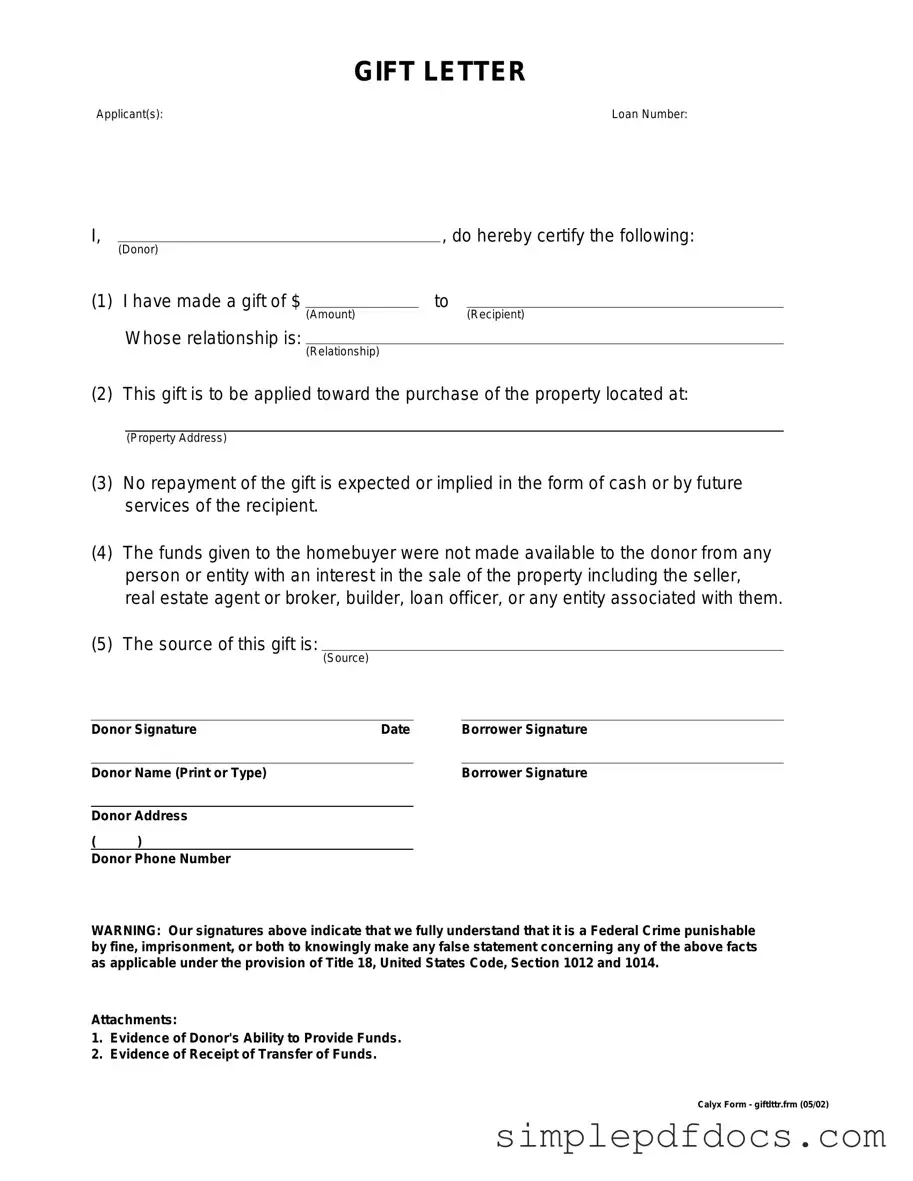Fill Your Gift Letter Form
The Gift Letter form is a crucial document used in real estate transactions, particularly when buyers receive financial assistance from family or friends. This form serves to clarify that the funds are a gift and not a loan, helping to strengthen the buyer's mortgage application. Understanding how to properly complete and utilize this form can make a significant difference in the home-buying process.
Get Document Here
